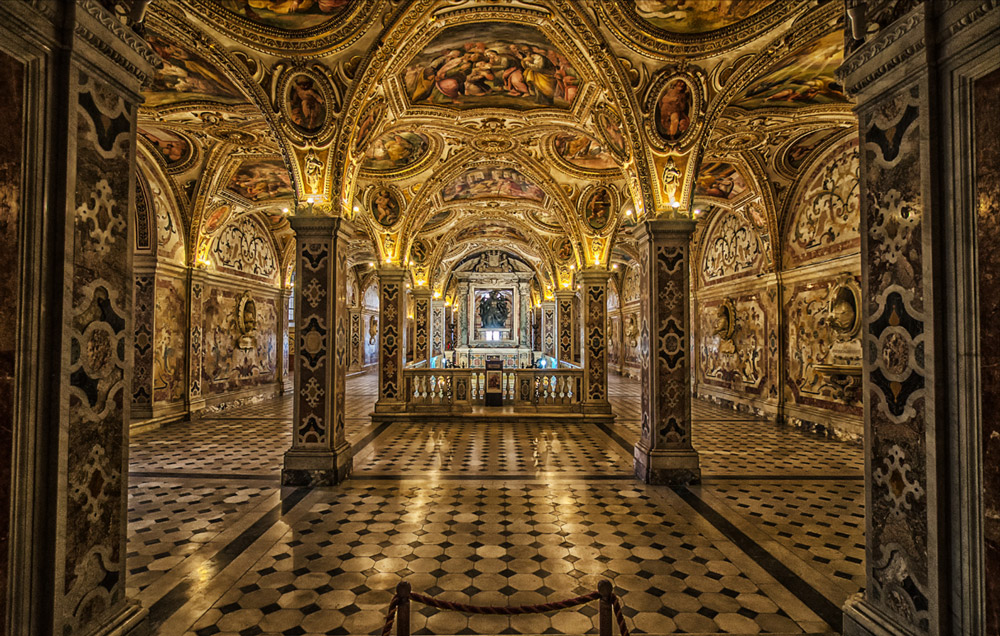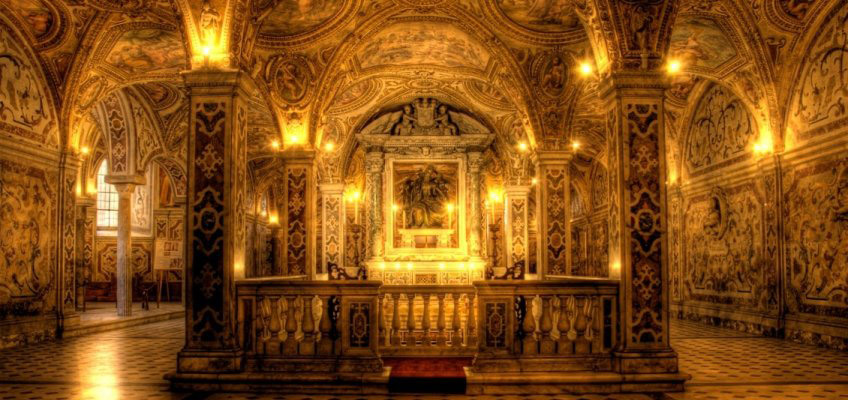When Instagram was called Frescoes: finding faith through art

A fresco at Corenzio
PART ONE
HOW do we reach an uneducated, illiterate, unformed generation of young people who are missing the opportunity to discover the message of the Gospel?
This was exactly the question that 16th century painters tackled head on with their adornment of chapels, depicting scenes from Christ’s life, such as the work by Corenzio in the Salerno Cathedral, which decoratively retells Matthew’s Gospel (see below). These frescoes and other forms of art were able to communicate messages which transcended literature and language, helping to cross boundaries of evangelisation.
What lessons can these masters teach us today?
Teaching religious literacy is a key aspect of Religious Education programs, but it is insufficient on its own. Evangelisation and catechesis are both important components of faith formation. Understanding key words, concepts and historical events is not equivalent to the way in which art and story can reach the heart. Over the centuries, painters, musicians and writers have been captivating the soul through their emotive works which have drawn people closer to an encounter with God.
How well do we engage the senses as modern Religious Educators?
Do we seek new forms of art that speak to young people, or settle for the use of familiar textbooks, PowerPoint slides and worksheets?
One of the biggest challenges for ministry with young people is that of connection. Effective relationships are a fundamental element of evangelisation and it’s problematic when there is no common language or similar experience to draw from.
Youth ministers have become experts in creating modern frescoes in the digital cathedrals such as Twitter, Facebook and Instagram.
Their engaging multimedia messages captivate the imagination, proclaiming beauty, truth and goodness.
The best youth ministry frescoes are not cheap reproductions of contemporary culture, refashioned for a Christian audience. It takes genuinely original pieces of art to draw the attention and respect of an audience who has access to millions of other stimuli at the click of a button. It should be good news for artists that our ‘subject’ (the Gospel) is beautiful, challenging and timeless. How does the average youth minister create such awesome works of art amidst the busyness of events, retreats and discipleship? The masters of the 16th Century were committed 100% to refining their practice and commissioned by the Church to share their gifts.

A fresco at Salerno.
Where are these artists? And what is their contemporary canvas?
Catholic Creatives is a movement that believes “God is calling his Church to a culture of rebirth and creative energy, a New Renaissance in Catholic Culture to renew the world through to the Catholic Imagination”.
They seek to engage talented designers and artists in the promotion of the Gospel by supporting ministries with effective communication, creative ideas and vigorous intellectual activity. Ultimately it is the movement of the Holy Spirit that draws people into an encounter with God, but we play a role in inviting, captivating and clearly communicating the joy of the Gospel.
Some people ask what does a Director of Faith Formation do all day?
I say we should be commissioning frescoes that help young people discover the fundamental truths of the Gospel message. These translatable artworks, songs and literature should find their way into ministry drama’s, personal sharing, interactive activities, retreat days, Facebook posts, service projects and prayer experiences.
If we are going to be relevant and engaging, it’s because we are speaking the language of the day. We can’t expect a medium created in the early 2000’s to speak to a 2018 audience, and equally it is insufficient to transfer an American program into an Australian ministry context. Close examination and dialogue with current and local youth culture is an extremely important role of the minister who wants to sow the Gospel in a way that reaches the good soil.
- Nathan Ahearne is the Director of Faith Formation at Marist College, Canberra


